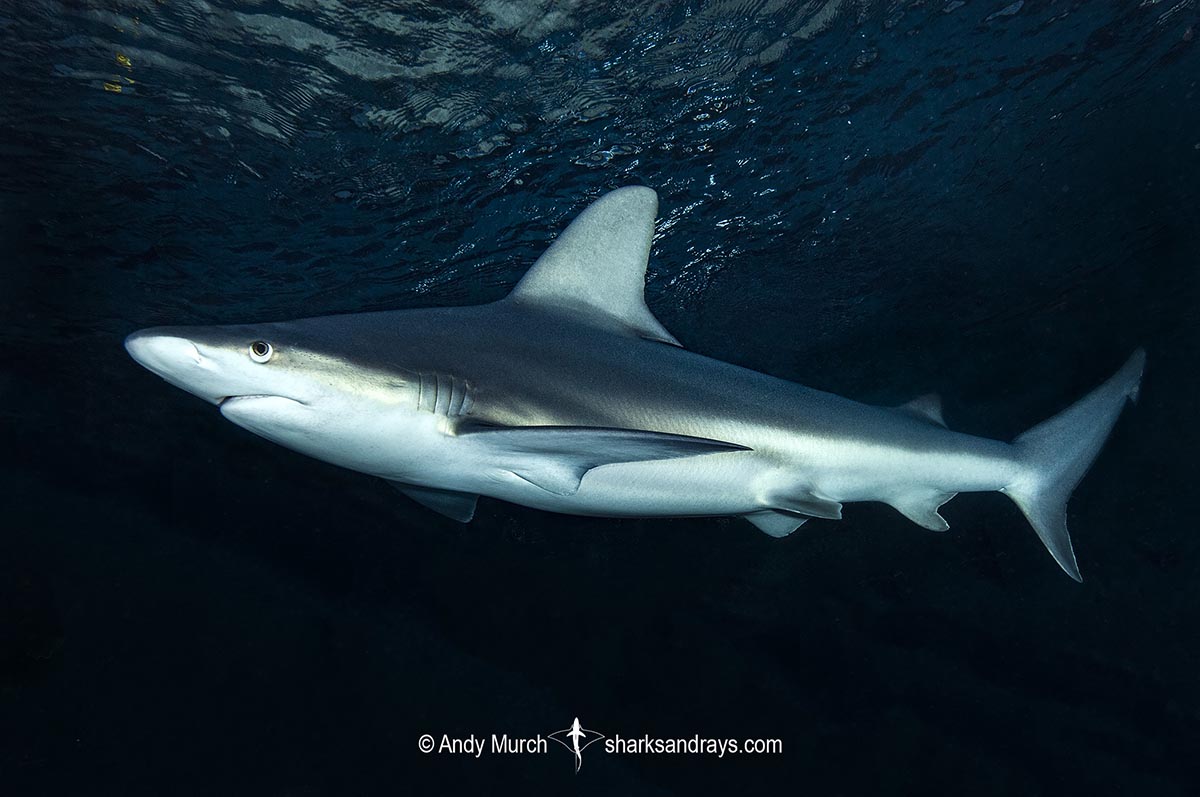Common name(s)
Sandbar Shark.
Identification
A large, stout shark with short, pointed snout. First dorsal fin large and high. First dorsal origin level with pectoral fin axil. Second dorsal origin level with anal fin origin. Interdorsal ridge present. Dorsal coloration greyish-brown or brown, with bronzy hues. Ventral surface white or cream coloured.
Size
Maximum length 234cm (Springer 1960). Size at birth 56-75cm. Size varies greatly by region.
Habitat
A subtropical and temperate species. Juveniles are commonly found in shallow water. Adults more common in 20-50m. Sandbar sharks are often seen in the surf line or in water so shallow that they are sometimes temporarily grounded as they cross sandy bays. Depth range from the surface to 280m.
Distribution
The sandbar shark has a wide but patchy distribution. In the western Atlantic, it is found from Rhode Island to Venezuela, including the Gulf of Mexico and the western Caribbean. Then from central Brazil to Uruguay. In the eastern Atlantic, it occurs from northwestern Spain throughout the Mediterranean, to the west coast of Morrocco, then shows up again West Africa. Likely, many of these isolated populations are actually connected but there are no records due to poor reporting.
It is present in the western Indian Ocean from South Africa to India, throughout Southeast Asia and around Australia, except the far south. It is also found in Hawaii and the Galapagos Islands but almost no records occur from the Eastern Pacific.

Conservation Status
ENDANGERED
Due to their semi pelagic and demersal nature, Sandbar Sharks are captured in many types of artisanal and industrial fisheries. Their low reproductive rate, leaves them very vulnerable to over-fishing. Where species specific data is available, sandbar sharks have declined by 50-80% over the last three generation lengths.

Reproduction
A viviparous species with yolk-sac placenta. 1-14 pups per litter. Gestation is 8-12 months.
Diet
Diet consists mainly of small bony fishes such as menhaden, kingfish, mackerel and snappers, plus small sharks and rays. Will also consume molluscs and crustaceans.
Behavior
Some populations of sandbar sharks undergo seasonal migrations related to water temperature or reproduction.
In Jose Castro’s Sharks of North America, he pieces together various studies to describe the big picture. Adult females that mated in the summer, migrate south in the fall and winter off the coast of Florida. In or before March they are the first to migrate; returning north to shallow nursery grounds between South Carolina and New York, where the give birth in midsummer. They remain until September and then travel south to winter off Georgia and the Carolinas with the male sandbar population.
Interestingly, the males do not travel north with the females. Of 300 sharks sampled in Great South Bay, New York, only 3 were males. This migration pattern effectively limits the opportunities for adult male sandbars from predating on their collective offspring.
Reaction to divers
Shy around scuba divers but more approachable in baited situations.
Diving logistics
Although widespread, there are few areas where sandbar sharks can be reliably encountered.
From late September until early spring, sandbar sharks regularly show up at shark feeds near Jupiter Inlet, Florida. Their appearance is far from guaranteed but this is still a pretty good place to see them at close quarters.
Off Haleiwa in Oahu, Hawaii, there are a handful of boats that offer chummed dives that attract sandbar and Galapagos sharks. Depending on the operator, these may be cage dives, or open water drift dives or snorkels. The amount of sharks varies, but on a good day there are plenty to go around.
What’s new
View our full list of updates
Similar species
Dusky Shark Distinguished by a proportionately smaller first dorsal fin, with an origin over the pectoral fin free rear tip.

